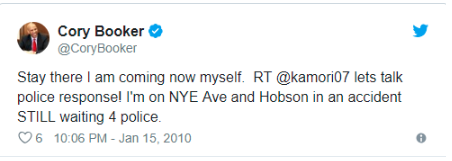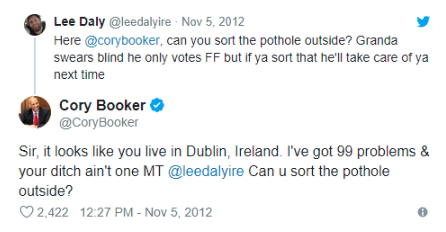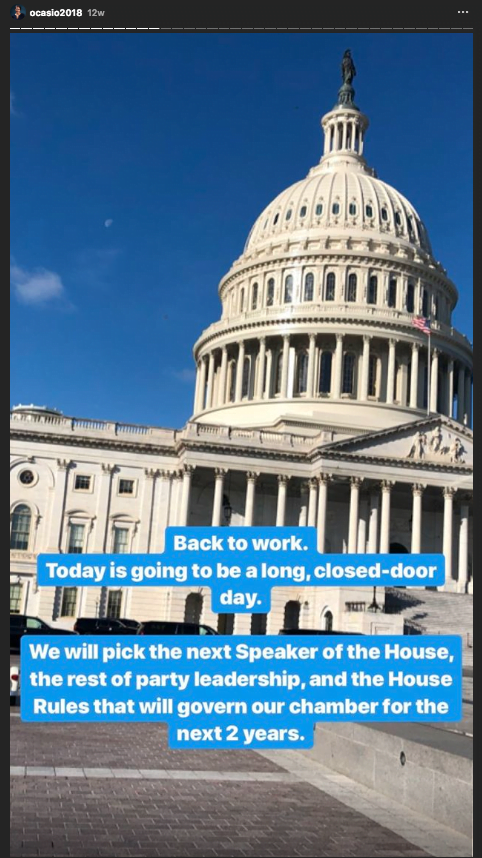Social media in government is a game changer.
After all, not many things have changed the way the public interacts with governments more than social media.
On social, people can engage in direct dialogue with politicians, civic officials, and even entire government agencies. It also gives them a chance to engage back.
At Hootsuite, we’ve worked with local, state, and federal governments all over the world. We know the unique requirements for social communications at all levels of government.
We also know how important it is for governments not only to adapt to a rapidly advancing world but also to leverage the changes to their benefit.
That’s why we want to break down the benefits of using social media in government—from building awareness to crisis communication. We’ll also look at some of the challenges governments face on social media and offer solutions on how to mitigate risk.
Key benefits of social media in government
Social media isn’t just a good way to share memes and keep up with what’s trending. It can also be a very powerful way for government agencies to interact with the public.
Below are six benefits of using social media in government.
Crisis communication
The spread of COVID-19 is unprecedented in almost every aspect for the public sector, including communications. Public information professionals, like you, are being asked to provide regular updates in uncertain times to an anxious public.
How do you make sure you’re using social media effectively during these times?
With many on people on edge and glued to their screens, the wrong message could exacerbate things. The public is looking to government not just for direction, but also to set the tone in how to cope. It’s especially important for the public sector to get the message out in a clear, calm, professional manner. This means no overuse of exclamation points or tweets in all-caps. Put officials front and center that can convey important messages in a controlled and reassuring way—as the National Institute of Health does.
What is #SocialDistancing—and why are we doing it? Dr. Anthony Fauci, Dr. Deborah Birx, and @Surgeon_General Jerome Adams explain. #coronavirus #COVID19 pic.twitter.com/UuJ97f1MNE
— HHS.gov (@HHSGov) March 23, 2020
Citizen engagement
An engaged audience is a happy audience.
And when you keep the public engaged, you’ll be able to keep them informed about the policy and issues that matter most to them.
This does double duty:
- You build trust. Social media gives you an opportunity to be more transparent. And when you open yourself up, the public will trust you more (more on this below).
- You humanize your brand. Too often people forget that there are actual people behind agencies and government offices. Social media gives you an opportunity to show audiences that hey, you’re human too.
For example, take this video from the National Park Service’s Instagram account. Even though it is merely 30 seconds long, the video was an engagement hit garnering more than 25,000 views.
And then there’s the Nextdoor app, which local governments use to organize town halls, educate citizens on safety issues, and engage community groups. Check out our coomplete guide to using the Nextdoor neighborhood app for more tips on how to use it to connect with constituents.
Build public trust
According to a survey conducted by Open the Government, more than half of voters want to see more authenticity and transparency in their government.
And why wouldn’t they? Just like a business, the ability to remain authentic and honest with your audience is crucial to building a good relationship with them. Social media provides a perfect avenue to remain transparent and clear with your constituents as possible.
One great example of this is Alexandria Ocasio-Cortez who leverages Instagram to give her followers a behind-the-curtain look at how Congress operates.
And the results are incredible. Not only does her social media engagement soar with each post, but it’s making her appear more authentic to people across the world.
Set the record straight
The National Guard arrested people for walking their dogs during the COVID-19 pandemic? The virus spreads through WhatsApp?
No and no.
Crisis + social media = a great breeding ground for misinformation and disinformation. Use social media listening to identify inaccuracies and respond accordingly. No need to address everything—some content may be too ridiculous to warrant a response. But if you see that a significant number of people are falling for or spreading falsehoods, use official platforms to set the record straight.
⚠ Due to the large amount of speculation regarding #COVID19, this is a reminder to rely on OFFICIAL sources for accurate information.
Help control the spread of rumors by sharing this page: https://t.co/12GySEYYXV pic.twitter.com/MJI3xTDpVs
— FEMA (@fema) March 21, 2020
Test messaging
Social media is a fantastic way to test your message with the public.
It doesn’t matter if you’re a candidate looking for a great slogan or a government agency looking for a way to connect with your audience. Using social media is great because it’s:
- Low stakes
- A great way to give you instant feedback
- Not only can you test messaging, but you can also leverage social media to craft effective messages as well.
- You’ll be able to see what’s trending with your audience and what captivates them. You can then use this information to connect directly with them.
Let’s take a look at a simple example: Campaign slogans.
You start by asking yourself a few simple questions like, “What do my constituents care about? How will my campaign help solve their problems?” And then you distill the answers down into a few slogans.
Once you have a few phrases you think are strong, you can make social media posts containing each of the slogans as a phrase or hashtag. Do this for one to three months. At the end, see which slogan garnered the most engagement and boom, you have a strong campaign slogan that resonates with people.
That’s a simple example — but the truth is there: With social media, you can test different types of messaging to see what resonates the most with your constituents.
For more, be sure to read our article on A/B testing on social media.
Now that you know the benefits of combining social media and government, let’s take a look at some of the best ways you can use it to your advantage.
Save money
Traditional public outreach is expensive.
In fact, federal agencies in the United States spend roughly $1.5 billion per year on public relations and advertising alone. And that’s just a drop in the bucket compared to how much government agencies spend on answering questions and delivering services via call centers.
For example, the U.S. Social Security administration spends about $275 million per year on call centers to answer questions and solve issues.
Social media can dramatically cut those costs.
Instead of spending on advertising, government entities can now leverage more cost-efficient social platforms to raise awareness about issues the public needs to know about. After all, these are platforms their audience already uses.
7 social media tips for government agencies
There are two types of social media accounts out there: Soapboxes and dinner parties.
A soap box social media account focuses on themselves. They use social to broadcast their messages and issues without engaging their audience.
A dinner party, on the other hand, invites audiences in and creates a dialogue with them. They encourage discussion and engagement between the host (you) and the guests (your audience).
At the end of the day, you want to be a dinner party. Here are five tips on how you can do exactly that.
1. Listen for relevant conversations
The first thing you should focus on as a social media manager is listening to your audience.
Why? Simple: Your audience will tell you what they want to hear.
Before you even write up that tweet or Facebook post, you need to know your audience and constituents better than they know themselves.
A lot of social media marketers—private or public—make the mistake of making posts before they even know what their audience wants to see from them. This results in low engagement and a very ineffective social media account.
That’s why you need to dive deep into your audience. Find out what they want. Dig into their pain points. Help solve their problems.
Also, social media can be a great opportunity for government agencies to answer any questions the public might have.
The Chicago Transit Authority does a fantastic job of this. If there are delays, construction, or route changes to the subway or bus lines, you can rest assured that the CTA’s social media accounts will be ready to talk and answer questions about it.
Not only that, but they also have a team of people who read and respond to every tweet.
We’ll be offering a one-time credit for any remaining days left on an active 7- or 30-day pass to help ease the burden for our riders. To learn more and see if you are eligible visit https://t.co/U08crTzzj7. Please direct follow up questions to @VentraChicago.
— cta (@cta) March 24, 2020
They know exactly what their audience wants from them: No nonsense information about transit delays and disruptions. They’re then able to deliver on that and see massive engagement. So spend some time immersing yourself in your constituents’ mindset. What do they want? What are they struggling with? And how is your social media account going to engage with them?
To help, check out our guide to conducting audience research.
2. Educate your audience with valuable content
One edge government social media accounts have on private ones is the fact that you have access to a massive amount of information such as environmental, scientific, and civic data. As such, people instantly recognize your account as credible and trustworthy.
That means they’re going to be much more willing to come to you as a source of knowledge and education.
For example, take NASA’s social media accounts. Each is filled with educational posts about space exploration and physics.
They also have one of the most popular social media presence of any government agency because they a) know their audience and, b) can provide credible, educational posts that interest that audience.
Bottom line: You can leverage your credibility as a government agency by educating your audience.
3. Keep it simple
Remember that the majority of your audience is looking at your posts while scrolling through hundreds of others. In crisis you may demand extra attention, but you’re still “competing” with other messages—so make your content as easy to consume and share as possible.
Use simple graphics, avoid large blocks of text, and try to get your main point across without asking people to click on a link or watch a lengthy video.
The World Health Organization (WHO) has been doing an excellent job communicating clearly on social media as the COVID-19 crisis continues to evolve, their updates are informative and to-the-point.
“More than 300,000 cases of #COVID19 have now been reported to WHO, from almost every country in the ????.
The pandemic is accelerating.
It took 67 days from the 1st reported case to reach the first 100K cases, 11 days for the second 100K & just 4 days for the third 100K”-@DrTedros pic.twitter.com/XoBkVnWtLH— World Health Organization (WHO) (@WHO) March 23, 2020
4. Engage
During his time as mayor, current New Jersey Senator was legendary for his usage of social media to engage directly with his constituents.
From filling potholes:

To fighting crime (seriously):

To even helping people across the ocean (kind of):

In doing so, he brought the citizens closer to their government.
“When we embraced social media, we took more control of the Newark narrative,” Booker said. “We increased responsiveness toward residents. We drew more of our constituents in to participate in government.”
Do you see what happened? By engaging with his constituents on social, he was able to improve service delivery and citizen satisfaction. Social media can do the same for you.
And while it might be tempting to pause social media engagement in times of crisis in order to focus on urgent messaging—don’t! Being responsive is critical when many services are suspended and people can’t communicate in person with public agencies.
In the midst of the COVID-19 pandemic, the U.S. Center for Disease Control took time to host a Twitter chat.
Q: How afraid of coronavirus should I be? #askCDC
– @Boomstick824— CDC (@CDCgov) March 13, 2020
And the NYC Subway team patiently responds to their 1 million followers whenever they can.
Hi, Amber. Your account is suspended. You will have funds available on your EZ Pay account once the suspension plan ends on 5/19 to resume your unlimited plan. The $30 fee is to cover rides if you need to travel. ^JP
— NYCT Subway. Stay Home. Stop the Spread. (@NYCTSubway) March 23, 2020
5. Post regularly
While a crisis may interrupt regular scheduled programming, in times of relative normalcy you should make every effort to consistently share content and engage with the public.
And don’t shy away from posts that might make people smile. If you can be funny without being offensive or crass, you may hit the Twitter jackpot like the National Cowboy Museum.
Hello, my name is Tim and I am the head of security for The Cowboy. I have been asked to take on the additional duty of social media management while the museum is closed. I’m new to this but excited. My team will also continue to protect and monitor the museum. Thanks, Tim Send pic.twitter.com/bPiXD9DoAd
— Nat’l Cowboy Museum (@ncwhm) March 17, 2020
Governments and their agencies don’t have to be boring outside of times of crisis.
6. Stay secure
Simple measures can safeguard government organizations against security breaches. A social media management platform, for example, is a great tool for managing all your social media accounts and activity across multiple teams or people.
Review and approve messages, log all activity and interactions, secure login access, and set up post review and approvals.
Here’s a quick overview of Hootsuite’s permission capabilities for organizations with multiple people—or even teams—that are responsible for social media.
Check out our step-by-step guide to social media security for more tips on how to protect your organization online.
7. Remain compliant
Remaining compliant with privacy requirements is critical for any government body. For large organizations with multiple social media practitioners, establishing best practices for social media use can help ensure the collective compliance of all users.
Guidelines towards acceptable and forbidden content, data handling, citizen engagement, and even tone are a few best practice examples organizations can implement to keep their team compliant.
If you manage social for a government or agency using Hootsuite, our partners’ social media archiving integrations make it easy to stay compliant with Freedom of Information Act (FOIA), General Data Protection Regulation (GDPR), and other public records laws.
In recent years, government bodies and their employees have had to respond to dramatic shifts in public expectations to political and government discourse.
Innovative policy makers and their staff are quickly adapting by creating highly engaging social content to rally follower support—while also remaining fully compliant and secure. For any government body wanting to capture and maintain public sentiment and engagement, embracing the new era of social media discourse is critical.
Better inform and engage on social media with Hootsuite. From a single dashboard, you can schedule and publish content to every network, monitor relevation conversations, and measure public sentiment around programs and policies with real-time social listening and analytics. Try it free today.
Try it for Free
